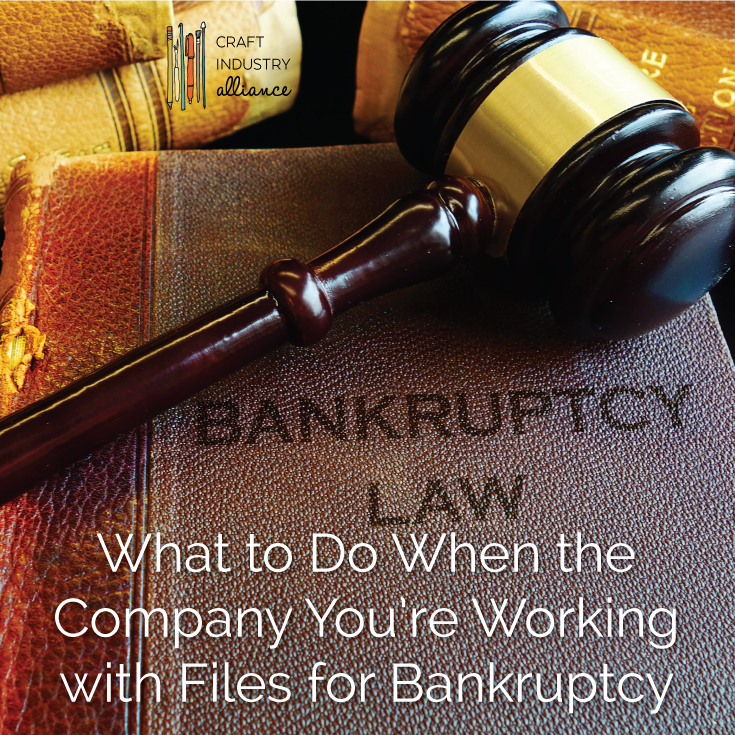
The Big Picture
Bankruptcy law has two main goals: to protect creditors by helping them recover what they’re owed and to help the bankrupt entity resolve its debts and liabilities so it can make a fresh start. The most common type of bankruptcy filing is a petition for reorganization, also known as a Chapter 11 filing. Companies that file for Chapter 11 protection want to stay in business, but have serious financial problems. They are hoping to use the power of the bankruptcy court to negotiate more favorable terms with their creditors and make other changes so the company can be profitable again.
The first step is for the struggling company (called the debtor) to file a petition in federal bankruptcy court asking for the court’s protection. The petition must include comprehensive financial disclosures including itemized lists of the company’s debts, financial obligations (mortgage or lease payments, utilities, salaries for employees, etc.), assets, pending contracts, and so on. The debtor has 120 days after the filing of the petition to submit a proposed plan for moving forward (a plan of reorganization), including specific steps it will take to pay off its creditors. Creditors may object to the debtor’s proposed plan of reorganization and file competing plans with different payment arrangements.
Once the bankruptcy petition has been filed, things can get complicated very quickly. The debtor is simultaneously trying to continue normal business operations while trying to negotiate with its creditors and come up with a reorganization plan to which its creditors will agree. As part of this process, the debtor can use the power of the bankruptcy court to nullify contracts, change the terms of contracts, or even unwind transactions that occurred before the bankruptcy petition was filed, creating numerous legal issues to work out. In some cases, interested parties, like shareholders or creditors, may allege fraud or other criminal acts, requiring additional legal wrangling. If the debtor is a small company with a relatively straightforward reorganization plan, the process can go smoothly, but for larger companies with extensive operations, it may take years before all these issues are resolved.
In the best-case scenario, a reorganization plan is eventually approved by the court and implemented. Creditors are paid whatever they are entitled to receive under the plan (if anything). Once the reorganization is complete, the company’s remaining debts are discharged, meaning the company no longer is liable for paying them. The company emerges from bankruptcy and now operates as a normal business again.
The Automatic Stay
One of the crucial advantages of a bankruptcy is that it buys time: time for the debtor to assess its financial woes and come up with a plan for the future while its creditors’ claims are put on hold. This is the reasoning behind the automatic stay.
A stay is a court order that stops something from happening, essentially freezing the status quo. When a bankruptcy petition is filed, the court automatically issues a stay that prohibits all debt collection efforts by the debtor’s creditors. Normally, if word got out that a company was in dire financial straits, creditors would rush to recover whatever they could as quickly as they could from the debtor. Creditors might repossess equipment, cancel contracts, foreclose on collateral, or file lawsuits to seize assets or perfect their claims. A few aggressive creditors might recover all the debtor’s remaining assets, leaving nothing for other creditors. The automatic stay prevents this creditors’ race, requiring all creditors to stop their collection efforts and participate in the bankruptcy process to recover on their claims.
The automatic stay is very broad and prohibits just about any action to collect a debt, with some limited exceptions. Absent special approval by the court, creditors cannot file lawsuits or proceed with existing lawsuits; cannot contact the debtor with phone calls or letters demanding payment; cannot seize collateral without court involvement; and cannot take any other steps demanding payment from the debtor outside the bankruptcy process.
The Claims Process
If a bankrupt company owes you money, your only recourse is to participate in the bankruptcy claims process. You do this by filing a proof of claim form with the bankruptcy court, stating the basis for your claim, how much is owed, and other relevant information. Recall that when the debtor files an initial bankruptcy petition, it must include a list of its obligations and debts. If your claim is included on this list, you should automatically receive notice of the bankruptcy filing along with information about the claims process. You may receive a copy of or link to the claims form you’ll need to fill out; be advised of the deadline for submitting the claims form; and given a contact person or entity (not the debtor) who will field questions from creditors. In larger bankruptcies, there is often a web page designed expressly for parties interested in the bankruptcy; look here for court orders, links to forms, PDFs of documents filed in court, and other vital information.
If you are owed money by the debtor but aren’t notified, don’t panic. It may just be that your name and address weren’t in the specific records used to create the list or were inadvertently omitted. A quick internet search and you should be able to find a claims form or contact information online. It’s a good idea to fill out the claims form even if you already received notice, just to be safe.
After claims are filed, any “party in interest” – meaning anyone who will be negatively affected by payment of a claim – has the right to file an objection to a specific claim. Say Creditor X files a claim for $5,000, an amount owed under a contract. Another creditor or the debtor may file an objection to this claim, saying it shouldn’t be paid because the statute of limitations has run out or because the claim is fraudulent. Or the debtor may acknowledge that it owes Creditor X money but claim that it owes only $2,500 instead, triggering a challenge by the creditor. If a claim is challenged, then the court will hold a hearing to determine the validity of the claim and decide whether or not to allow it.
At this point, most creditors must sit back and wait. Certain creditors, such as those with an interest in collateral, may have additional options, but for a basic contracts claim, the only option for recovery is the normal claims process. Eventually, when the court approves a plan, payment will be made to those eligible under the plan. This could take months or years depending on how complex the bankruptcy is, and many creditors could receive nothing or a fraction of what they are owed, depending on what kind of assets are available.

Bankruptcy Q&A
Now that we’ve seen how the federal bankruptcy process works, let’s focus on specific issues that could affect a small business or entrepreneur who is owed money by a company in bankruptcy. When writing this section, I’ve assumed that the creditor is a craft-related business with a relatively small claim against the debtor for the typical kinds of contracts involved in our industry: design contracts, publishing contracts, contracts for services like editing or tech editing, pattern royalty arrangements, and the like.
Q: The debtor owes me money from before the bankruptcy filing and hasn’t paid. Can I contact them to ask for payment?
A: No. The automatic stay prohibits all debt collection practices with only a few very specific exceptions. Continuing to contact the debtor, whether by sending letters or making phone calls, violates the stay and could result in penalties imposed by the bankruptcy court.
Q: I’ve submitted a claims form. When will I get paid?
A: There’s no way to tell how long it will take for a bankruptcy case to get to the payment phase. It’s also difficult to predict whether the debtor will have enough assets to pay off all its creditors or how much each creditor will get.
As part of the bankruptcy process, the various claims of creditors are divided into different categories (called classes). Each class must consist of claims that are “substantially similar” to each other and all the claims within a class are treated the same way. Certain classes of claims get priority, meaning they are paid before other classes.
At the top of the priority list: a special group of claims called “unsecured priority claims.” These are claims that must be paid first as a matter of public policy. For example, money owed for child support is an unsecured priority claim; the debtor’s assets must be used to pay these claims before any others. Another class of claims that get preferred treatment are secured claims – claims secured by an interest in property, like a mortgage or car loan. Secured creditors are in a good position when it comes to collecting on their debts because the court may allow them to retake the physical property if the debtor can’t pay.
Most creditors don’t fit into these classes and are considered “unsecured non-priority creditors.” These claims are unsecured (i.e., there isn’t any collateral to secure payment) and they aren’t given a special priority for public policy reasons. Examples include credit card debt, utility bills, medical bills, and other contracts. Most contract claims – unpaid design or writing fees, for example, or royalties owed for the sale of DVDs, patterns, or books – will be considered unsecured non-priority claims. Sadly, these unsecured non-priority creditors are the last of a bankrupt company’s creditors to get paid – meaning there may be nothing left to pay them with or at best, they may get pennies on the dollar.
Q: I signed a contract with the debtor before the bankruptcy but my performance is due after the bankruptcy. What do I do?
A: Let’s say you’ve agreed to design a quilt for Company X. You sign the contract on January 15th and agree to supply the finished design by March 1st. Suppose Company X files for Chapter 11 protection on February 1st. Now you face a dilemma. The company is clearly in trouble – if you regularly work with Company X, it may already owe you money for prior work – and you have very real concerns about the risk of not getting paid for this new design. But you’re also bound by a contract that requires you to submit the quilt sample by March 1.
Unperformed contracts like this are called “executory contracts,” and generally speaking, the debtor gets to decide whether to continue with the contract or whether to reject it. If the debtor decides to reject the contract, you don’t have to perform your end of the bargain but you aren’t allowed to sue the debtor for its failure to abide by the contract. If the debtor doesn’t decide right away, you’re stuck. You have to continue performing your end of the bargain until the debtor either affirms the contract or rejects it.
Q: A company in bankruptcy just offered me a book deal. Should I accept?
A: A company in Chapter 11 bankruptcy wants to stay in business. That means it needs to continue doing the normal things that any on-going business would do, including entering into new contracts. In most cases, a debtor is given latitude to enter into new contracts and these post-petition contracts are enforceable like any other contract. The debtor is expected to perform its end of the bargain, including making payment in due course.
Whether you choose to enter into a new contract with the debtor is largely a personal decision, dictated by your individual circumstances and your risk tolerance. Some things to consider:
- You’re not legally obligated to do business with a company in Chapter 11. If you think the risk is too high, you are free to avoid new contracts and dealings with a debtor.
- If no one is willing to do business with the debtor, the company won’t be able to maintain its business and it may end up liquidating. Some may feel a responsibility to help others in the industry to stay in business; others may feel that it is not their duty to prop up a business that has made bad choices in the past.
- The risk of non-payment is, obviously, higher with a company already facing a serious financial crisis. Keep in mind that if the debtor is not able to pay for a post-petition contract, you will end up with a priority non-secured claim in the bankruptcy proceeding. That means your debt gets priority over non-priority unsecured claims should the debtor choose to liquidate. You’ll need to decide whether that provides you with enough comfort to proceed; a priority unsecured claim is only worth something if there are unsecured assets available to make payment.
- Do some research about what’s going on in the bankruptcy proceeding. The debtor may be trying to sell divisions of its business to raise money or to pare down its operations. If you’re offered a book deal and you learn the debtor is trying to sell its publishing division, that could affect your decision.
- Consider altering the terms of the contract before you sign to increase the likelihood of payment. For example, you could require payment before delivery of a sample garment or change the terms of your contract to require the debtor to pay invoices within 30 days instead of 60 days.
As you can see, bankruptcy is a very complex area of the law and there are no guarantees that a creditor will get paid. It’s also expensive to hire a bankruptcy attorney and litigate claims, often disproportionately more expensive than the amount the debtor owes. For these reasons, many small businesses and other unsecured non-priority creditors will file a claim as part of the claims process but beyond that, will not spend more money or effort trying to recover the debt.
This article is intended for informational use only and does not constitute legal advice or create an attorney-client relationship. Consult a licensed attorney in your state to determine how the law applies to your unique situation. This article reflects my own personal views and not those of my employer.

Carol Sulcoski
contributor
Carol J. Sulcoski is an attorney by day and a knitting author, designer and dyer by night. Her latest book is “Yarn Substitution Made Easy” (Lark Crafts 2019). She lives outside Philadelphia with her three nearly grown-up children and a fluffy orange cat.


I wish I could afford legal advise I m stuck in Sears holdings Corp chap 11 they owe me wages labor board had to honor the stay so I’m n secure priority
Who should I contact